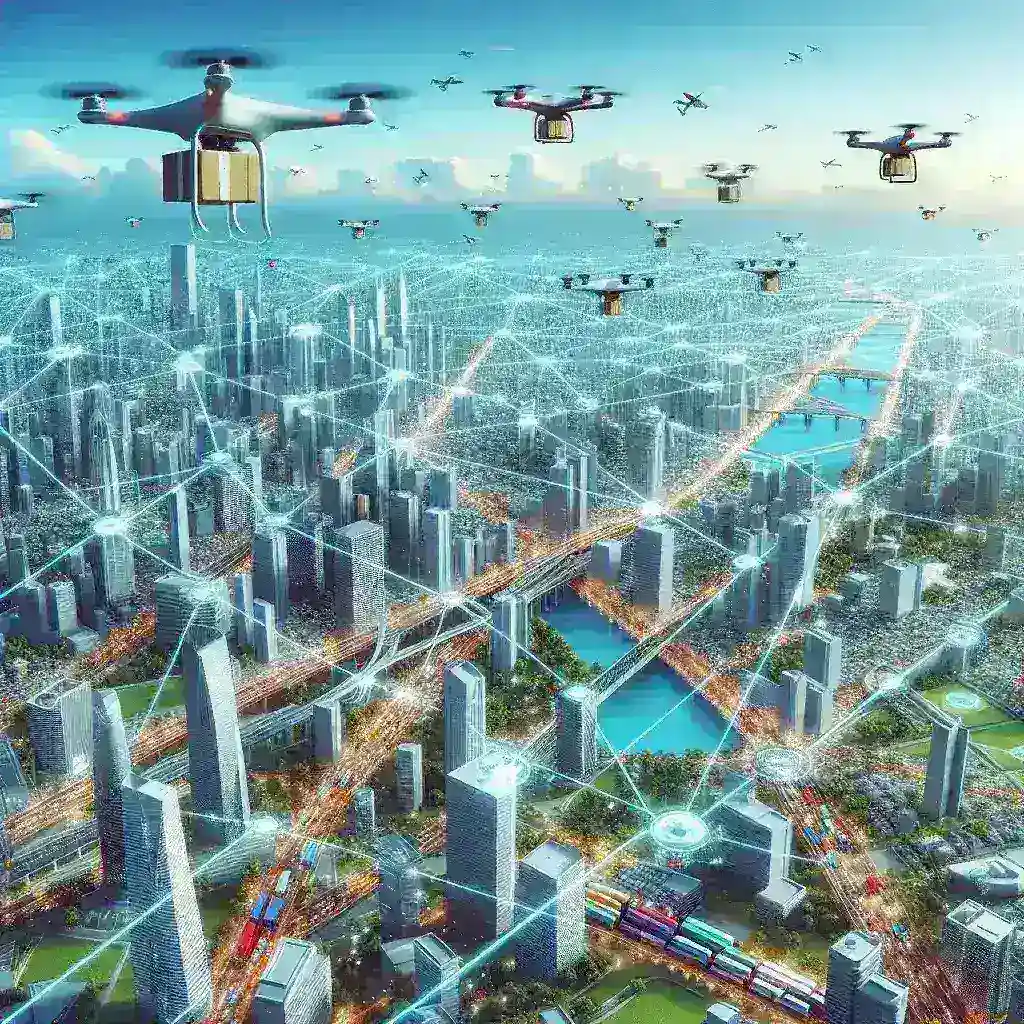
Drone Delivery Network Connects Major Metropolitan Areas
The Rise of Drone Delivery Networks
In recent years, the concept of drone delivery has evolved from a futuristic fantasy to a practical solution for urban logistics. As cities expand and the demand for faster delivery options grows, drone delivery networks are emerging as a vital component in connecting major metropolitan areas. This article delves into the intricacies of these networks, their potential benefits, and the challenges they face.
Historical Context
To understand the present landscape of drone delivery, it is essential to explore its historical roots. The idea of using unmanned aerial vehicles (UAVs) for delivery purposes dates back several decades, initially used in military applications. However, it wasn’t until the advent of advanced technologies in navigation, battery life, and payload capacity that drone delivery began to take shape in the commercial sector.
In 2016, Amazon Prime Air made headlines with its ambitious plans to use drones for delivering packages within 30 minutes. This initiative set the stage for other companies, like Google and UPS, to explore similar ventures. The COVID-19 pandemic accelerated the adoption of contactless delivery methods, bringing drone delivery to the forefront of logistics discussions.
How Drone Delivery Networks Operate
Drone delivery networks are complex systems that require precise coordination among various components to function efficiently. Below is a step-by-step breakdown of how these networks typically operate:
- Drone Fleet Management: Companies maintain a fleet of drones equipped with advanced navigation systems, sensors, and cameras.
- Order Processing: Customers place orders through dedicated apps or websites, triggering the logistics system.
- Route Optimization: Algorithms calculate the most efficient delivery routes, considering factors like air traffic and weather conditions.
- Loading and Launching: Once a route is confirmed, drones are loaded with packages and launched from designated delivery hubs.
- Delivery: Drones fly autonomously, utilizing GPS and onboard sensors to navigate to their destination.
- Package Drop-off: Upon arrival, drones can either land to deliver packages directly or use drop-off mechanisms for safe release.
The Benefits of Drone Delivery
Drone delivery networks have the potential to revolutionize urban logistics. Here are some key benefits:
1. Speed and Efficiency
One of the most significant advantages of drone delivery is speed. Drones can bypass traffic congestion and deliver packages directly to customers, often within minutes. For businesses, this means improved customer satisfaction and loyalty.
2. Cost Reduction
Over time, drone delivery can reduce operational costs associated with traditional delivery methods. With fewer vehicles on the road and lower labor costs, companies can allocate resources more effectively.
3. Environmental Impact
Drones are generally more energy-efficient than delivery trucks, leading to a lower carbon footprint. As cities strive for greener solutions, drone delivery can contribute to reducing urban air pollution.
4. Accessibility
In remote or hard-to-reach areas, drone delivery can provide access to essential goods and services, bridging the gap between urban centers and underserved regions.
Challenges Facing Drone Delivery Networks
While the benefits of drone delivery are significant, there are several challenges that must be addressed:
1. Regulatory Hurdles
Drone delivery is subject to numerous regulations that vary by region. Navigating these legal frameworks can be cumbersome for companies seeking to implement drone services.
2. Safety Concerns
Ensuring the safety of drones in urban airspace is paramount. Issues such as potential collisions with buildings, other aircraft, or pedestrians must be considered and mitigated.
3. Public Acceptance
For drone delivery networks to succeed, public acceptance is crucial. Concerns regarding privacy, noise pollution, and safety can hinder widespread adoption.
4. Technological Limitations
Current drone technology still has limitations in payload capacity, flight range, and battery life. Continuous advancements are necessary to overcome these challenges.
Future Predictions for Drone Delivery Networks
The future of drone delivery networks appears promising, with several trends likely to shape their development:
1. Integration with Smart Cities
As cities adopt smart technologies, drone delivery networks will likely integrate with urban infrastructure, optimizing delivery routes and minimizing congestion.
2. Expanded Use Cases
Beyond package delivery, drones may be utilized for medical supplies, food delivery, and even emergency services, providing a versatile solution to various logistical challenges.
3. Enhanced Automation
With advancements in artificial intelligence and machine learning, drone delivery networks will become increasingly autonomous, reducing the need for human intervention.
Real-World Examples
The implementation of drone delivery networks is not just theoretical; several companies are already making strides in this field:
1. Wing (Alphabet Inc.)
Wing, a subsidiary of Alphabet Inc., has successfully tested drone deliveries in urban areas, providing customers with quick access to a variety of products.
2. Zipline
Zipline has revolutionized medical supply delivery in countries like Rwanda and Ghana, using drones to transport blood and vaccines to remote locations.
3. Amazon Prime Air
Amazon’s Prime Air is poised to launch its drone delivery service, aiming to deliver packages within 30 minutes, showcasing the company’s commitment to innovation.
Cultural Relevance of Drone Delivery
As drone delivery networks become more prevalent, they are also influencing cultural perceptions of delivery services. The convenience of drone delivery aligns with the fast-paced lifestyle of urban dwellers, meeting the increasing demand for on-demand services. Furthermore, as consumers become more accustomed to seeing drones in their skies, acceptance will likely grow, paving the way for their integration into daily life.
Conclusion
Drone delivery networks hold the potential to transform the logistics landscape of major metropolitan areas. While challenges remain, the benefits of speed, cost efficiency, and environmental impact present a compelling case for their adoption. As technology continues to evolve and regulations adapt, the future of drone delivery looks bright, promising a new era of urban logistics that can connect communities like never before.
